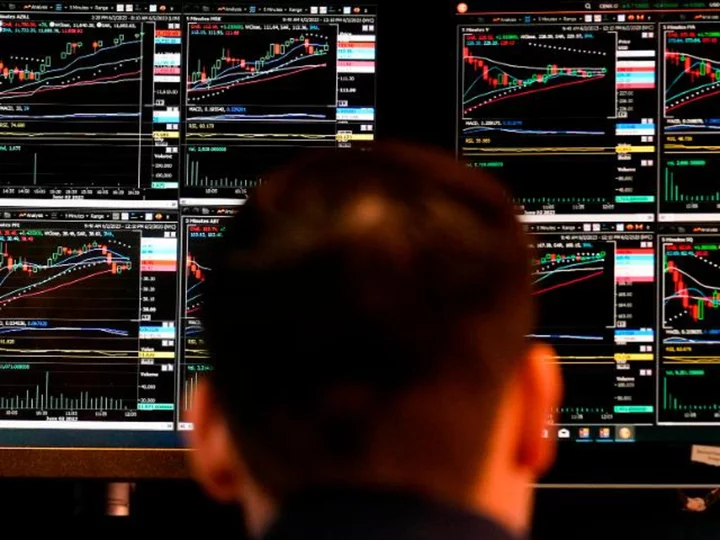The S&P 500 index on Friday closed at its highest level in almost a year. But that doesn't mean that stocks are poised for a bull run just yet.
The broad-based index on May 26 closed above the 4,200 level for the first time since August 2022, when the market began to sell off and fell sharply to last year's low of about 3,577 in October.
The S&P 500 ended last week up 1.8% at about 4,282, marking its best weekly gain since late March.
So, what caused the broad-based index to finally breach its level of resistance? The gains were powered by three key updates that investors cheered:
Congress passed the debt ceiling deal, paving the bill's way to President Joe Biden's desk to be signed into law — and ending weeks of turmoil on Wall Street about the potential catastrophic consequences of a debt default.Federal Reserve officials indicated that the central bank will likely take a breather on raising interest rates at its June meeting after ten consecutive hikes.The May jobs report showed stronger-than-expected job gains, but the unemployment rate ticked up and wage growth slowed.
"It was much easier for the bulls to take the upper hand with recent tailwinds from artificial intelligence and the debt ceiling providing momentum. Meanwhile, the bears are tired of taking on the relentless bulls and failing to gain ground," José Torres, senior economist at Interactive Brokers, wrote Friday.
For months, investors have debated what will lead the S&P 500 to break through, either moving higher or lower, from the roughly 3,800 - 4,200 trading range that it's been stuck in for the past six months. Now that the index has managed to breach the top level of resistance, that raises the question: Does this rally have legs?
Not necessarily. There are several reasons to believe that stocks could fall back below 4,200 in the near-term, says Adam Turnquist, chief technical strategist for LPL Financial.
One concern is that a large portion of the index's 11.5% advance this year has been driven by monster gains in mega-cap tech stocks, while small- and mid-cap stocks have lagged behind. An equal-weighted version of the S&P 500 is up only about 1.5% for the year.
That means that the tech stocks that have powered the stock market's gains this year are overbought, and investors will likely take profits as they edge higher, according to Turnquist.
"There's definitely some potential for either a pullback or a bit of a consolidation as we get closer to that 4,300 level," he said.
After the potential debt ceiling catastrophe was averted this week, the Treasury Department will start selling bonds like crazy. That could also create some competition for stocks, potentially sending equity prices lower.
The good news is that the S&P 500 will likely return to trading within the 3,800 - 4,200 range, meaning any downside — at least in the short term — will likely be limited, according to Turnquist.
But another risk is the potential for hawkish commentary from the Federal Reserve at its post-meeting press conference on June 14, he says, adding, "that would certainly trigger a pullback, potentially a little bit of an uptick in interest rates and that would certainly weigh on the tech space."
Bitcoin had a tough May
Bitcoin's rally is petering out.
Last month, the world's largest cryptocurrency by market capitalization fell nearly 7% to $27,216 a coin. That marks its worst monthly performance since November 2022, when the collapse of crypto exchange fund FTX roiled digital currencies.
Bitcoin's sour performance in May came after it soared 23% in March, when the collapses of regional banks Silicon Valley Bank and Signature Bank sent investors searching for places to stash their cash. The cryptocurrency rose above $30,000 in April.
So, what drove the price of bitcoin back down?
The strong performance of the US dollar, which tends to have an inverse relationship with bitcoin, is one culprit. The US dollar index has steadily gained in recent months, and is back around the levels it was at before the banking turmoil in March.
Another reason was that the rally from the banking crisis lost steam, says Saqib Iqbal, an analyst from Trading.biz.
"The decline in bitcoin's price and its struggle to surpass key resistance levels raise concerns about the sustainability of its bullish trend," Iqbal said.
Still, he expects bitcoin to rally modestly but stay around a resistance level of $30,000 later this year, when investors have more clarity on what the Federal Reserve's interest rate hike trajectory will be.
Moreover, any downside in bitcoin this year will also likely stay around that same level, according to Iqbal.
Up Next
Monday: Factory orders for April. Apple's annual developer event.
Tuesday: Earnings from JM Smucker Company.
Wednesday: Consumer credit for April.
Thursday: Weekly jobless claims and mortgage rates.
Friday: US Baker Hughes oil rig count.

